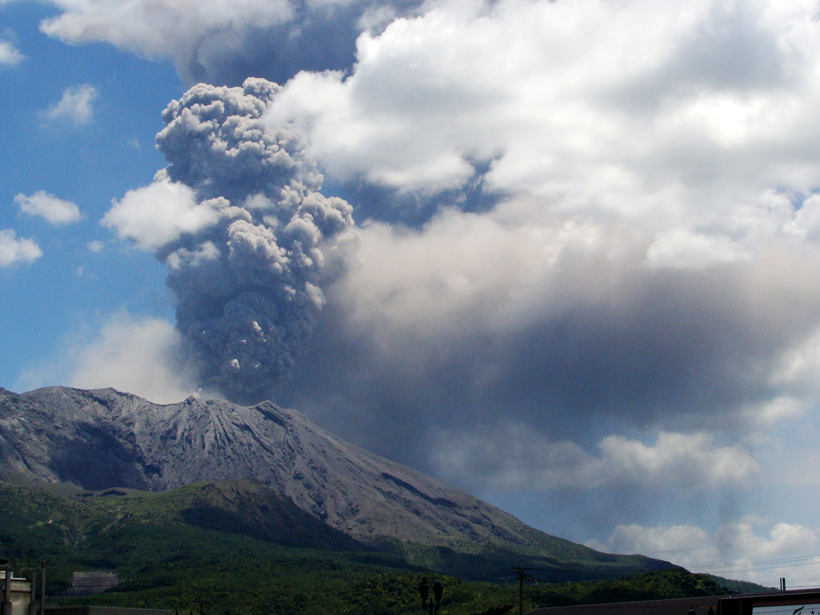Source: Geochemistry, Geophysics, Geosystems
At the junction of four tectonic plates in the Pacific Ring of Fire, Japan has more than 100 active volcanoes—more than almost any other country in the world. Although terrestrial records can provide information on a region’s volcanic activity, there’s another place scientists can turn for clues: the ocean.
Researchers can extract a wealth of information from the volcanic tephra layers in marine sediment cores, which can provide a record of volcanic activity stretching back as much as many tens of millions of years. Tephra forms from rock fragments and particles ejected during a volcanic eruption, which means that tephra layers allow scientists to identify the source volcano via chemical analysis, gauge the distance to the source if it’s unknown, and characterize the size and type of volcanic eruption.
In a new study, Mahony et al. use marine tephra layers to understand the history of Japan’s volcanic activity. The researchers looked at sediment cores from 45 marine sites around Japan and identified and dated nearly 5000 tephra layers. Most of these sites were hundreds of kilometers away from the likely source volcano. The average number of tephra layers per unit time provided the scientists with a proxy for the frequency of volcanic events. From the marine record, they determined that volcanic activity in Japan increased in several marked intervals at about 8 and 6–4 million years ago and from 2 million years ago to recent time. The marine tephra record also corresponded well to the terrestrial data for the same eruptions.
The authors infer that most visible tephra layers more than 100 kilometers from a volcano are likely to be associated with large eruptions (M > 6 on the volcano explosivity index) that are associated with the formation of calderas, depressions that form when a volcano collapses.
Finally, the scientists considered factors that could produce such changes in the rate of explosive volcanoes around Japan and emphasized how the large-scale physical processes of tectonics, volcanism, and magmatism are inextricably linked. The researchers determined that the major and minor tectonic shifts of the Pacific and Philippine Sea plate configuration that started around 20 million years ago have most likely led to the changing rates of volcanism and primed the mantle under Japan for the more explosive volcanic events recorded in the ocean sediments. (Geochemistry, Geophysics, Geosystems, doi:10.1002/2016GC006362, 2016)
—Wudan Yan, Freelance Writer
Citation:
Yan, W. (2016), Japan’s volcanic history, hidden under the sea, Eos, 97, https://doi.org/10.1029/2016EO054761. Published on 24 June 2016.
Text © 2016. The authors. CC BY-NC 3.0
Except where otherwise noted, images are subject to copyright. Any reuse without express permission from the copyright owner is prohibited.

